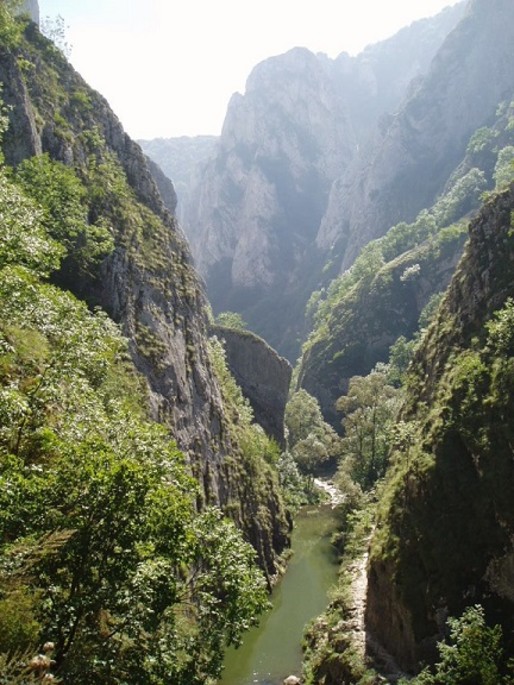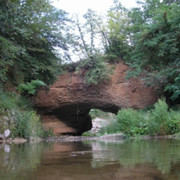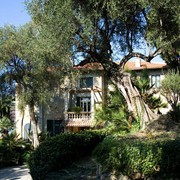Turda Gorge is one of the most beautiful tourist attractions in Transylvania and a place with immense scientific value. The area is interesting from a biological, zoological, ecological, geological, speleological and historical point of view and has been drawing researchers ever since the 1780s.
The gorge was formed by the River Hășdate digging into Jurassic[1] limestone layers. The erosion created a deep riverbed, abrupt stone walls, cavities that have collapsed over time, caves (about 60), alcoves and arcades. They create a spectacular scenery. Turda Gorge is also an important nature reserve because it is home to many rare plants and animals. Most significant is an onion species from the glacial period – the stone garlic (Allium obliquum) – which can be found in only one other place – beyond the River Volga.
The caves on the domain have played an important role in the lives of the locals and carry wonderful histories with them. During times of war, they were used as shelter.
Balica Cave served this purpose in 1660, during a Tatar attack and once again in 1686, during a German attack.
Chimney Sweepers’ Cave supposedly got its name from a chimney sweep from Turda, who, on 13 August 1780, descended into the cave and died trapped in one of its cavities.
Cave Călăștur is important for the historical artifacts that have been discovered here. Most of them are tools from the Neolithic[2], but a small few are as old as 600 thousand years. Many other archeological findings suggested that the cave might have been used for religious purposes sometime in the past.
The Roman camp Potaissa and the Old Convent of Petrid, both located in the vicinity of the gorge, add to the historical significance of the place. The camp was built in the year 168 by Legio V Macedonica[3] (The Fifth Macedonian Legion) and was abandoned in 274 when the Romans retreated from Dacia. The Convent dates back to the 13th century and, over its long history, has belonged to three different religious denominations: Roman-Catholic, Orthodox and Greek-Catholic.
Turda Gorge is famous among foreigners too, as it attracts visitors from many countries – England, Denmark, the U.S.A., etc. The tourists say they come here because it is the only place that has maps with trails that are well defined.
[1] A geological period between 200 and 145 million years ago.
[2] 10.200 BC – 2000BC.
[3] A Roman legion that was sent to defend the North-Western part of Roman Dacia at the beginning of the war between the Roman Empire on one side and Germanic and Sarmatian tribes on the other.




















